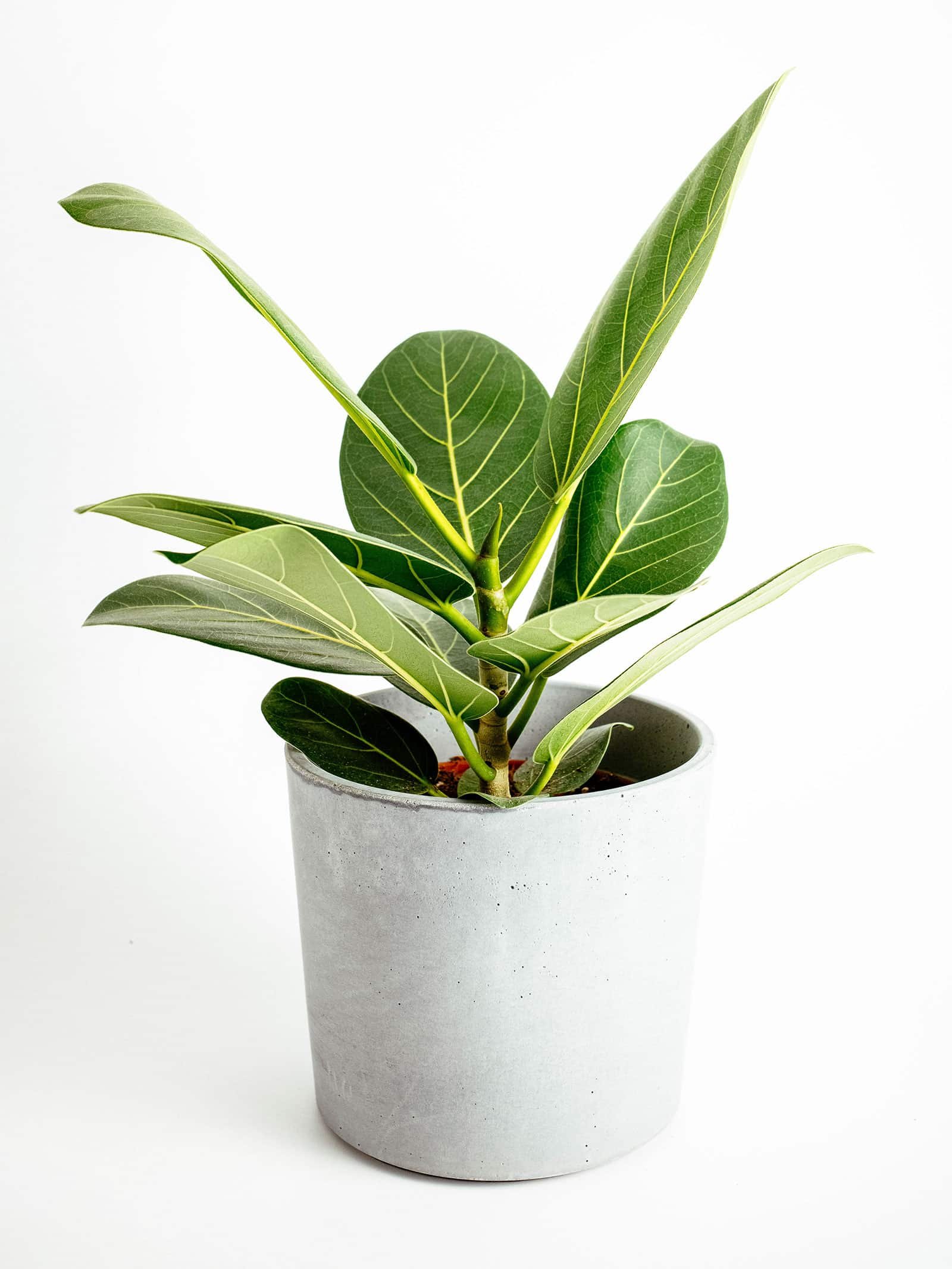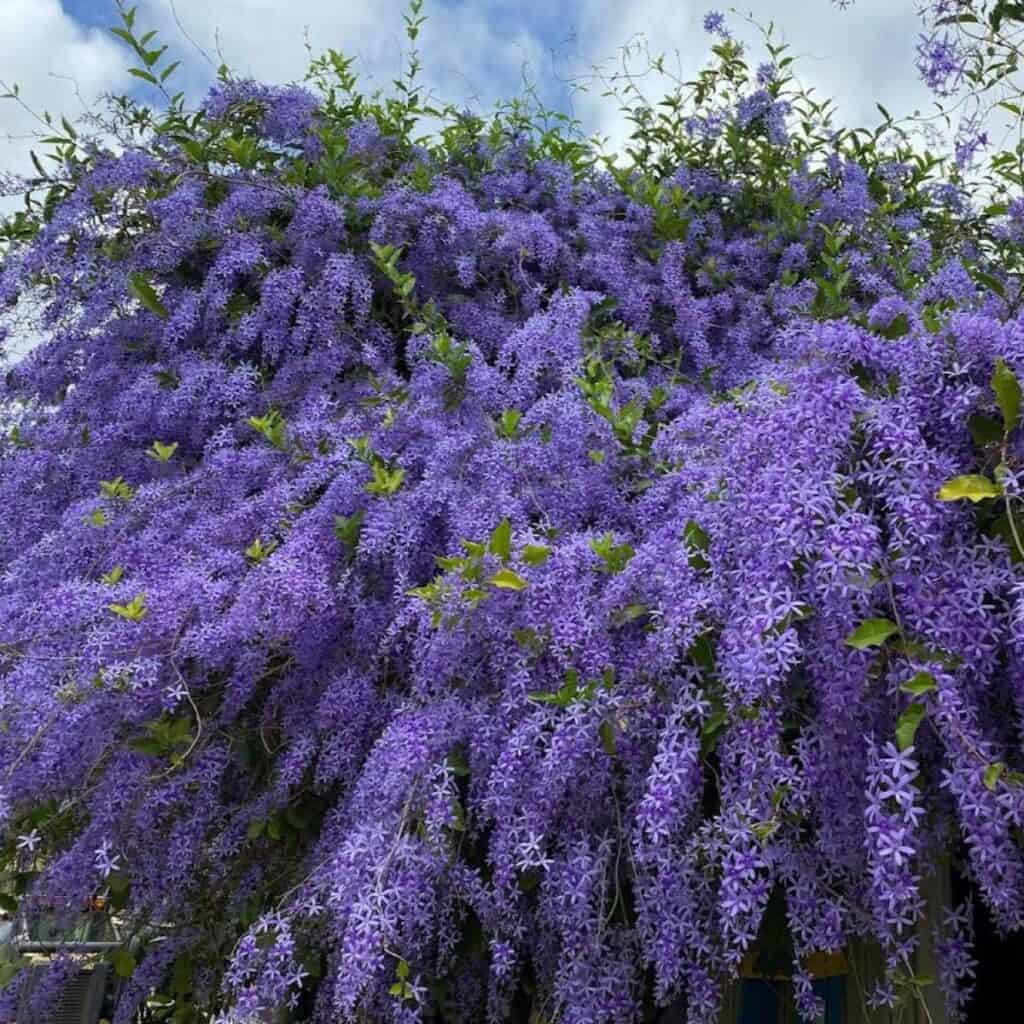Coffee is grown commercially in tropical and subtropical areas worldwide, mostly in developing countries, while the rest of the world consumes most of it – up to two billion cups a day! Coffee is big business. And while most of us can’t hope to compete with commercially-grown coffee, they make excellent trees and are worthwhile for growing at home. Even without a garden, they make fabulous indoor plants. It is also a beautiful plant with masses of white flowers in spring and red to dark green leaves for most of the year.
Coffea arabica grows in home gardens throughout the warmer regions of the USA and successfully as an indoor plant, making it a valuable addition to your list of trees to grow.
A mature, healthy plant can produce up to 4000 beans a season. One cup of coffee takes an average of 70 coffee beans, which means that you get more than 50 cups of coffee from one tree. What a bargain for a tree that basically looks after itself but for the occasional care and maintenance.
Arabica Coffee Plant
Epic Gardening’s Arabica Coffee Plants:
- Reach 15 feet tall
- Grow well in containers
- Are low-maintenance
- Have year-round ornamental appeal
Overview
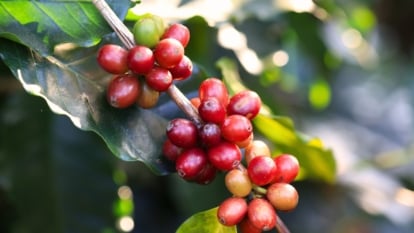
|
|
|
What Is It?

Coffea arabica is a small to medium tree with horizontal branches and glossy green foliage. In spring, the branches are covered with jasmine-scented white flowers, after which green berries that turn red appear. In the industry, these are called ‘cherries’ and are picked to get the all-important beans.
It must be explained, however, that there is a significant process to get through before those beans are ready for roasting.
To prepare the beans:
- Harvest the cherries in late fall and early winter when they are deep maroon in color.
- After collecting the harvest, you have 24 hours to remove the skin and pulp. Squeeze them by hand so the skins burst and the beans pop out. Rinse in water and discard any pulp and bits.
- The fermentation stage is next. Place the beans in a bucket and cover with water. Set aside to ferment for at least 18 hours. The natural enzymes from the pulp will ferment and become gritty. At this time, rinse for the next stage.
- The drying stage can take between 15 and 30 days, depending on the weather. Place in a single layer on trays in the sun and move every three days. Cover from rain.
- When they are hard, they can be cracked open to release the endosperms, the two beans we use for roasting.
- Rub the beans together to remove any of the silvery skins.
Depending on the type of coffee you prefer, the stages of roasting will go from green to yellow, light brown to dark brown, and dark for bitter and full-bodied flavors.
Native Area
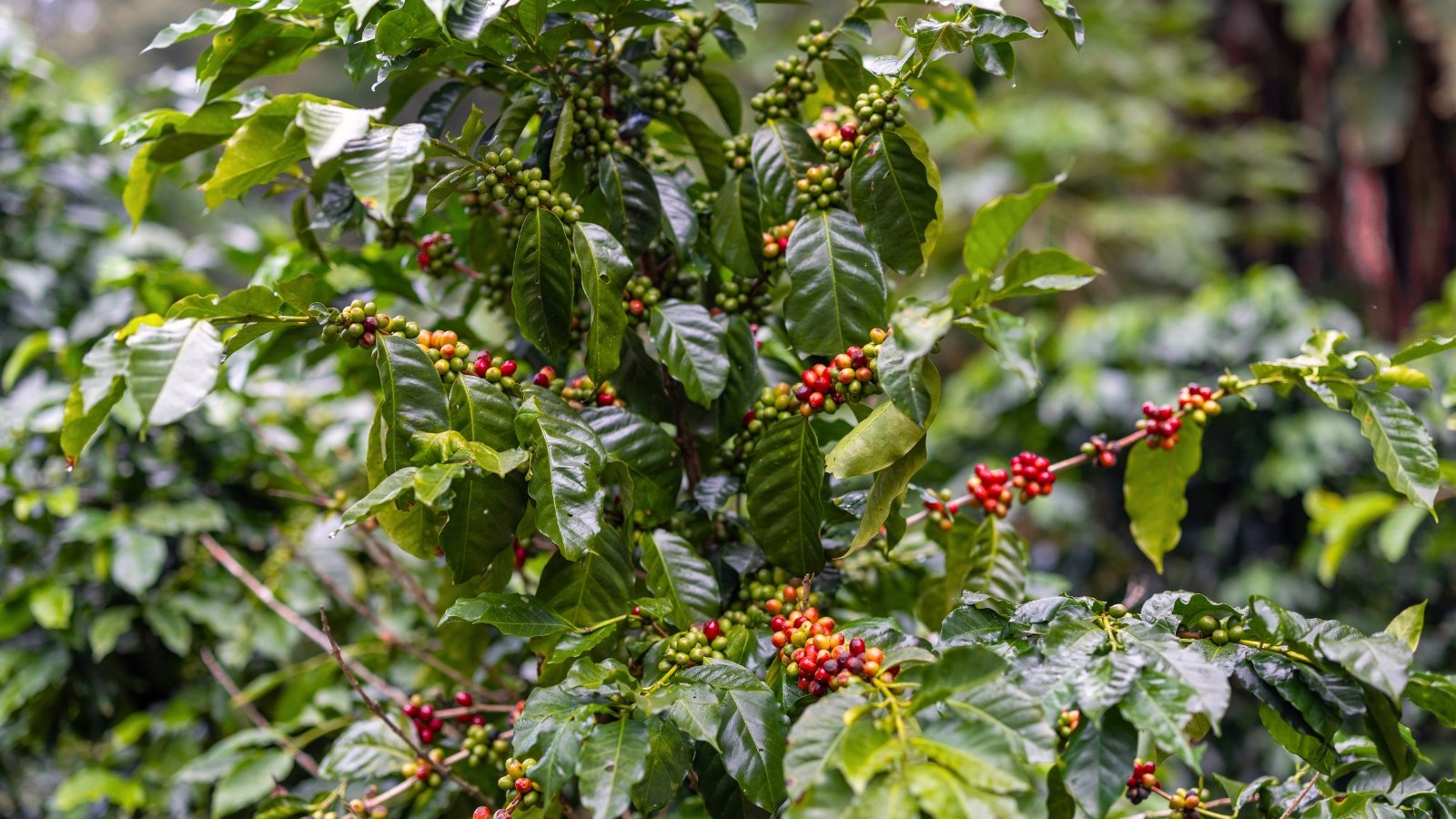
Initially, coffee grew naturally in Ethiopia and thereafter in Kenya and Sudan. Historians believe that coffee seeds were taken from these plants and sent to Yemen, where they were grown as a crop. From these first plants, breeders worldwide have created thousands of arabica varieties that will grow in different climates, making the coffee industry what it is today.
Coffea arabica grows commercially in what is known as the ‘bean belt’, which runs around the world between the Tropic of Cancer and the Tropic of Capricorn. This equatorial zone has a climate ideal for growing coffee and, perhaps more importantly, at an ideal elevation between 2600 and 6500 feet above sea level.
Approximately 20-40% of the world’s coffee comes from Coffea canephora, also known as ‘Robusta’, for its higher caffeine content, disease resistance, and better yields. ‘Liberica’ (Coffea liberica) came about after coffee rust almost obliterated ‘Arabica’ and ‘Robusta’ plants during the 19th century. This rare and expensive variety makes up 2% of the world’s production.
There are still another 120 or so varieties of coffee, but most do not have any caffeine in the beans.
Characteristics
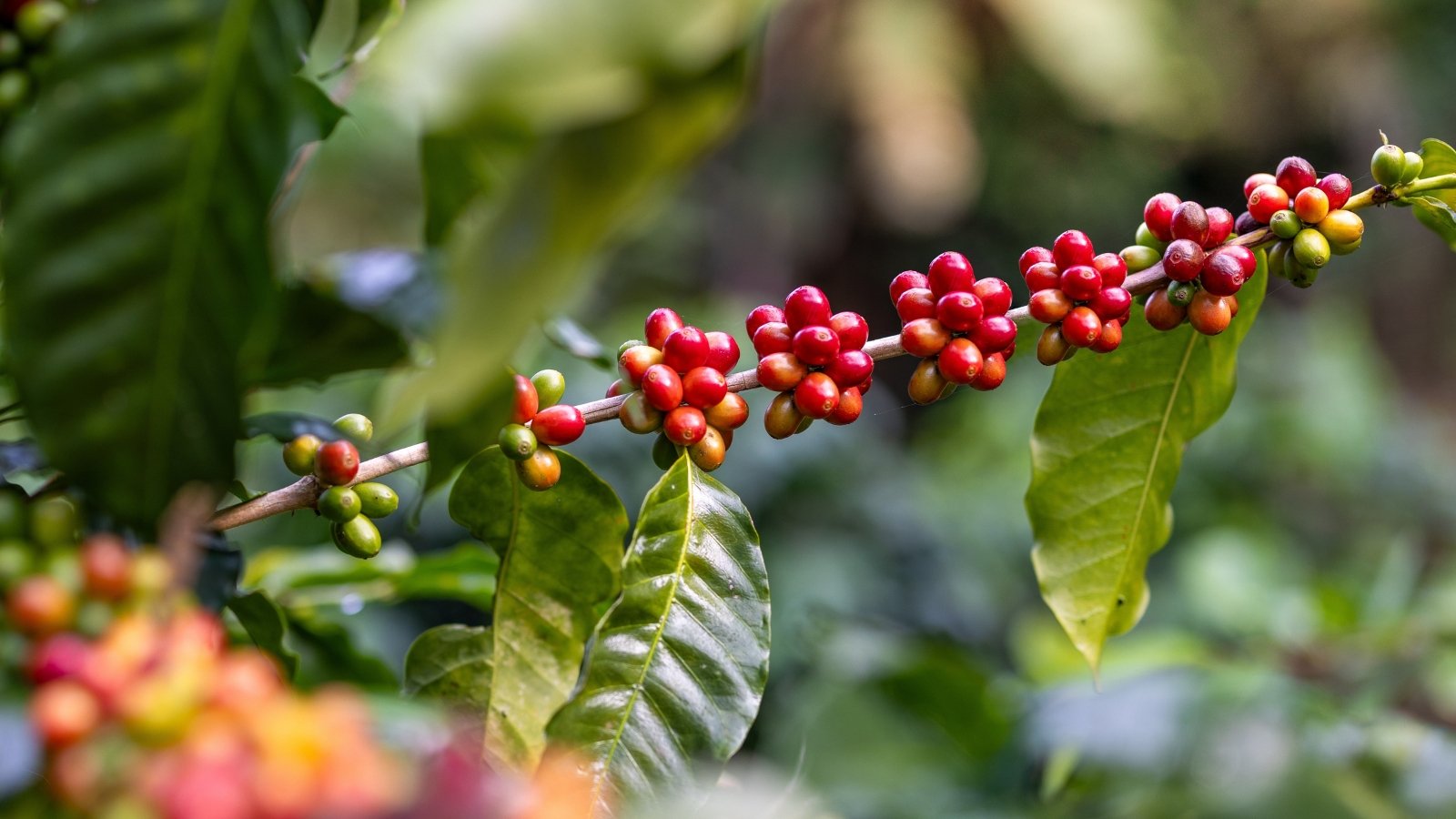
Coffee plants have a unique growth habit. Their lateral branches stick out horizontally and weep at the ends with glossy green leaves for most of the year, and then an explosion of scented white flowers appear along the leaf axils in spring and summer.
In fall, the green fruits turn red. Coffee trees can last for 60 years or more and, if looked after, can produce coffee yields year after year.
How to Grow
Once established, these trees are very easy to grow. My trees have been in for one season, and I expect great things next year. They do really look after themselves, and I am always surprised at how good they look year-round without much interference.
Light
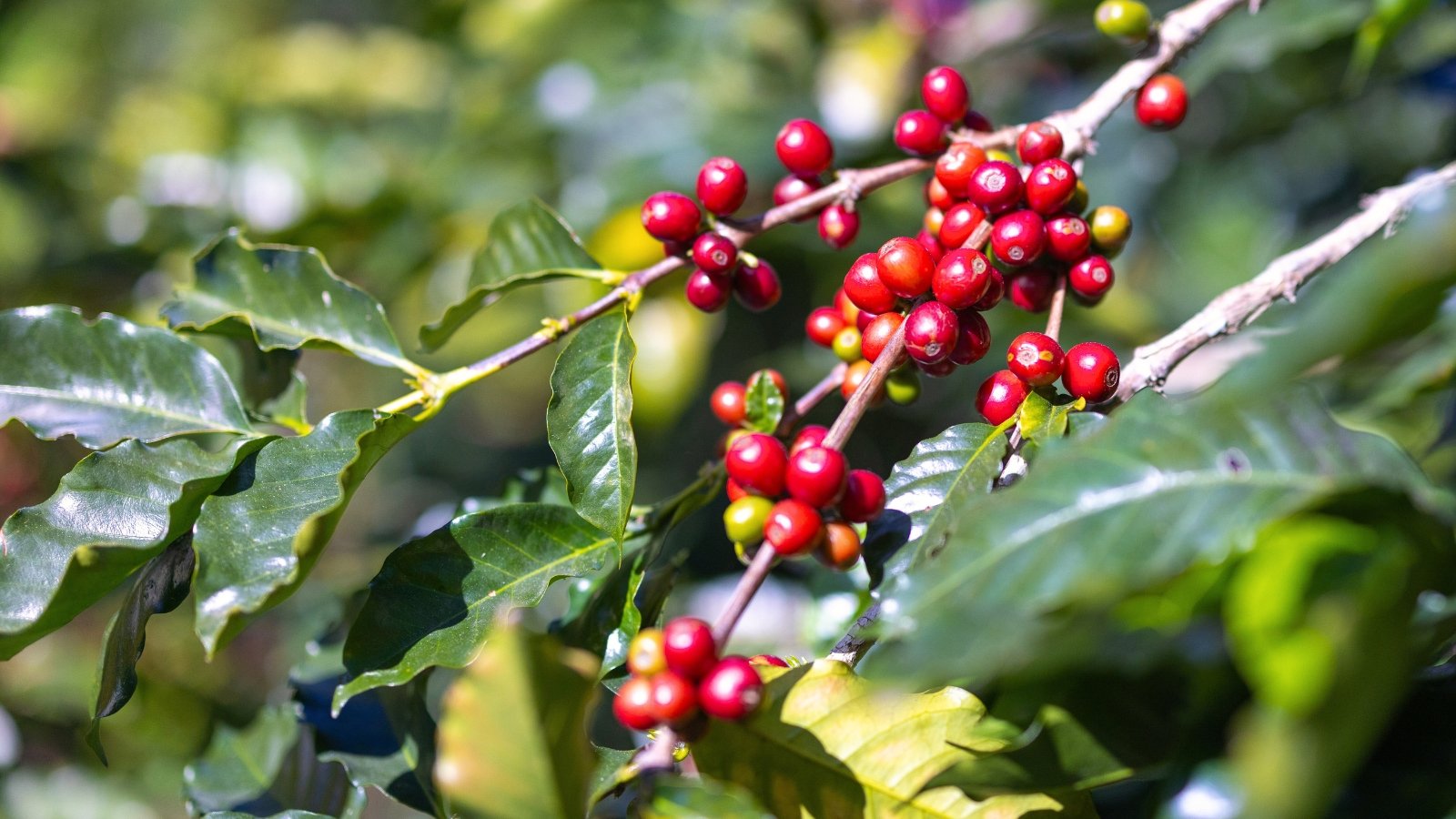
Coffee plants prefer the morning sun and dappled afternoon shade. They grow naturally as understory plants under larger trees. Avoid full sun, as this could burn the leaves.
Indoors, they need bright, indirect light.
Water
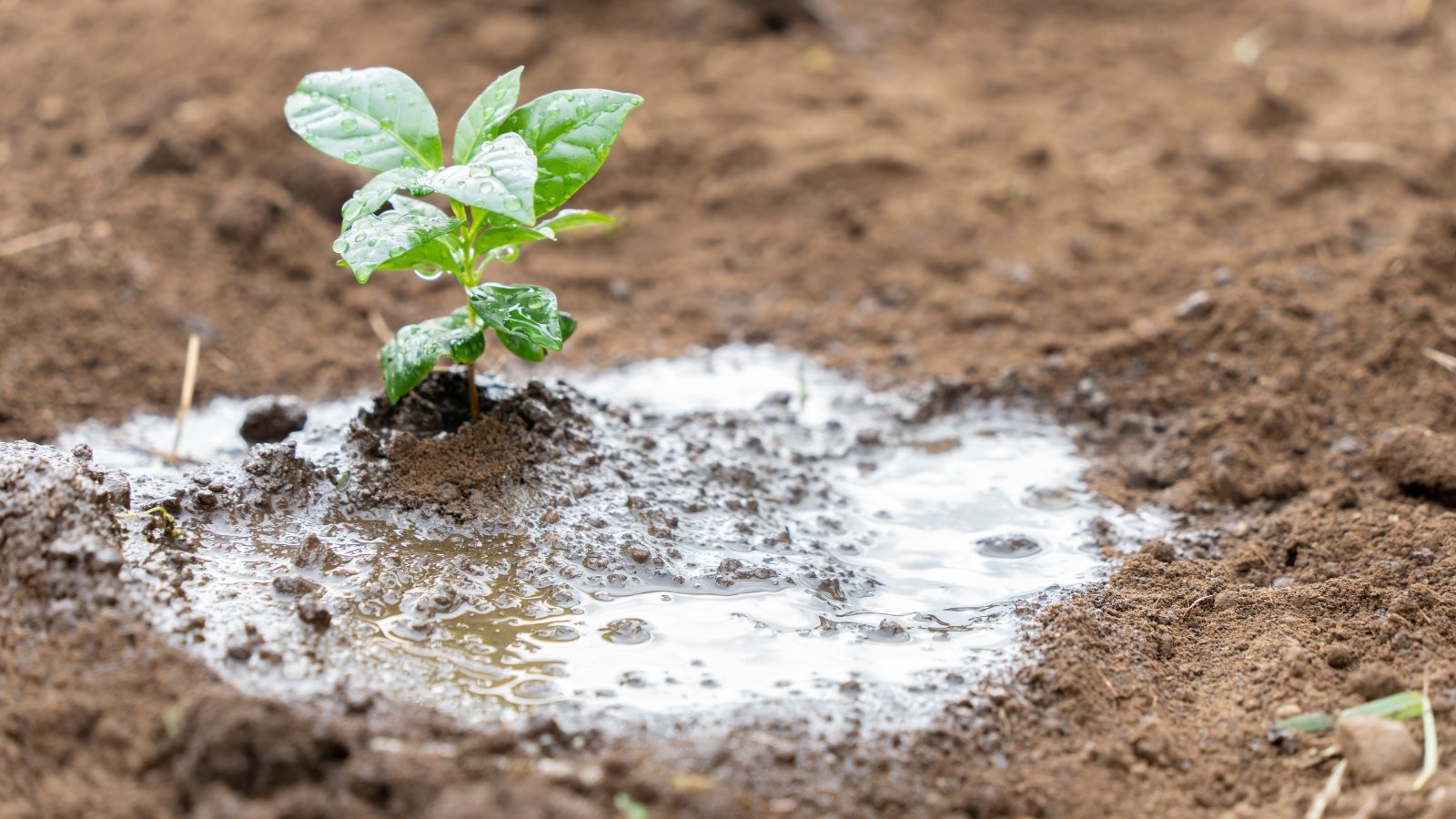
These plants require regular watering from spring to autumn. They need water to flower and set fruit. Like many plants, there is a delicate balance between enough water and overwatering. Too much water is also bad for them, but allowing them to dry out in winter between waterings is okay.
Container plants may need more watering. Check the soil every two to three days to ensure they’re adequately hydrated.
Soil
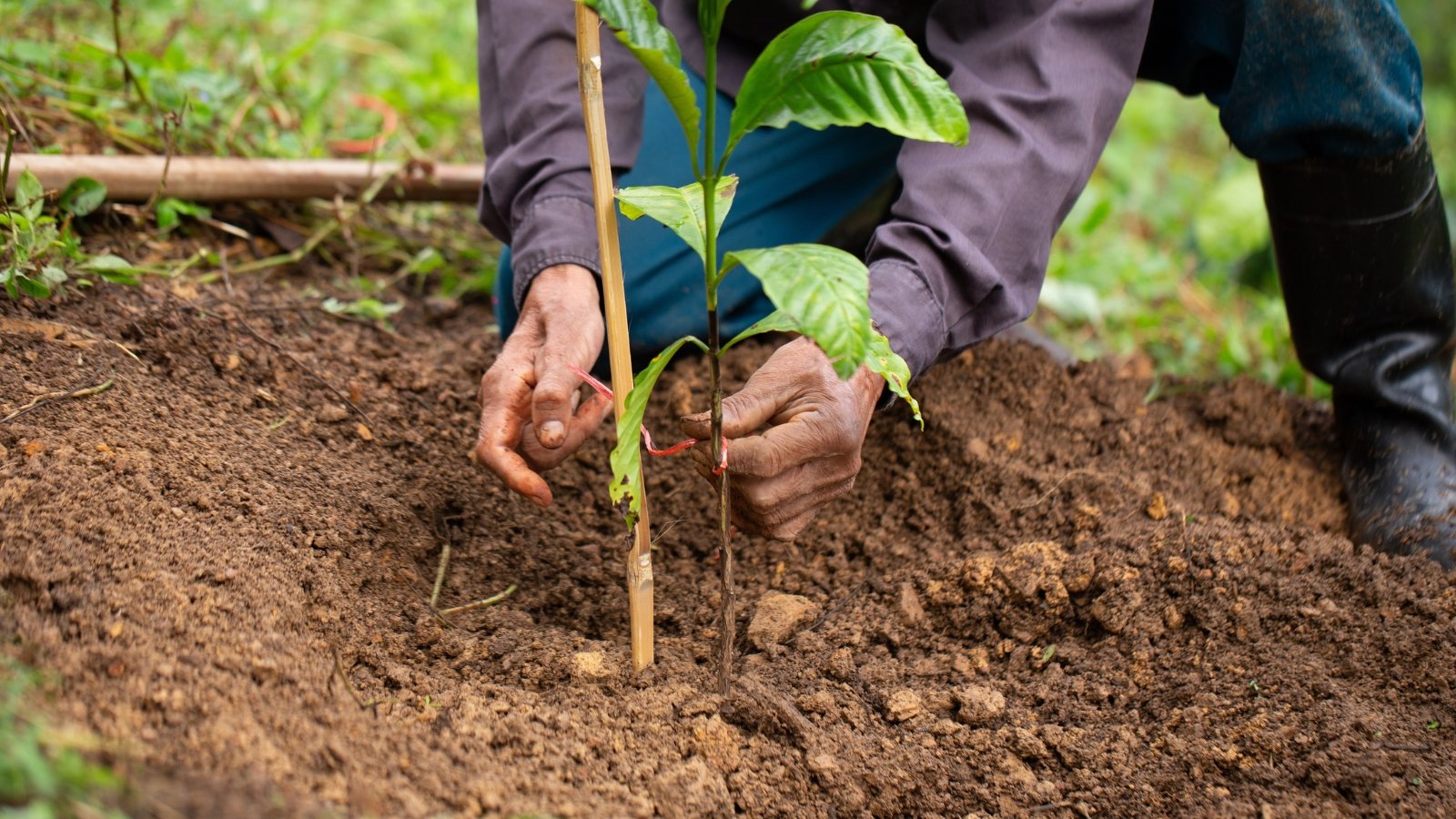
Coffee plants prefer rich, loamy soil with plenty of added nutrients at planting time. The soil must be well-draining but not waterlogged. Use of mulch is essential to retain water.
Although you can grow mature plants from green coffee beans, it’s best to buy more mature ones from a nursery so that the harvesting of beans will not be too many years away. The soil pH levels should be slightly acidic, ranging from 5.5 to 7.
For potted houseplants, use a rich peat-based potting soil with good drainage.
Temperature and Humidity
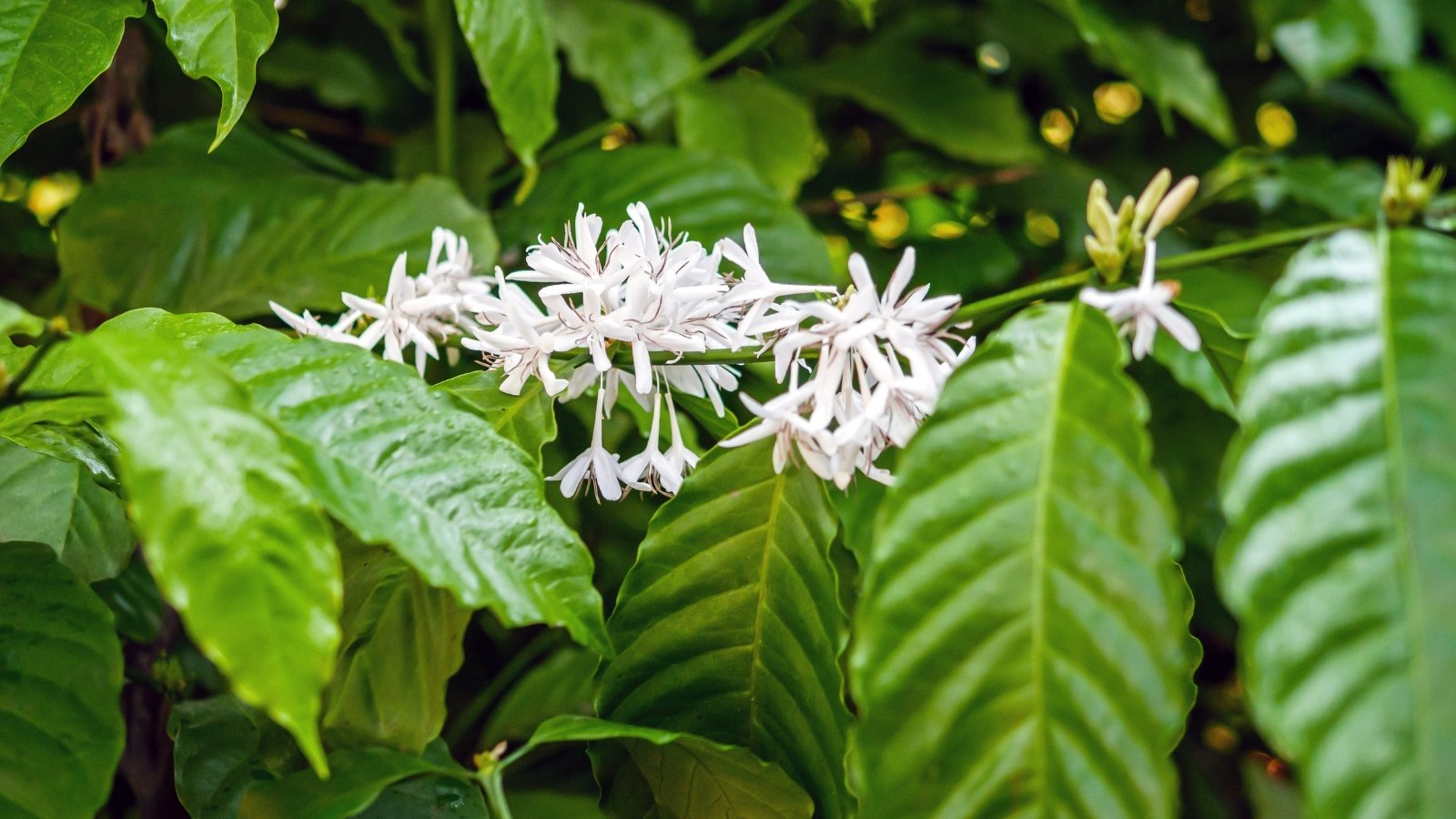
The ideal temperature range to grow coffee is between 59°F and 75°F (15-24°C), producing the best flavor from the beans. If the temperatures in your area drop below 41°F (5°C), plant in containers that you can move to a greenhouse, cover them with frost protection fabric, or grow them as houseplants indoors. Indoors, they prefer a temperature of between 65°F and 80°F (18-27°C).
Arabica coffee grows well year-round outdoors in zones 9-11.
Coming from the equator, they like lots of humidity and misty conditions.
Fertilizing
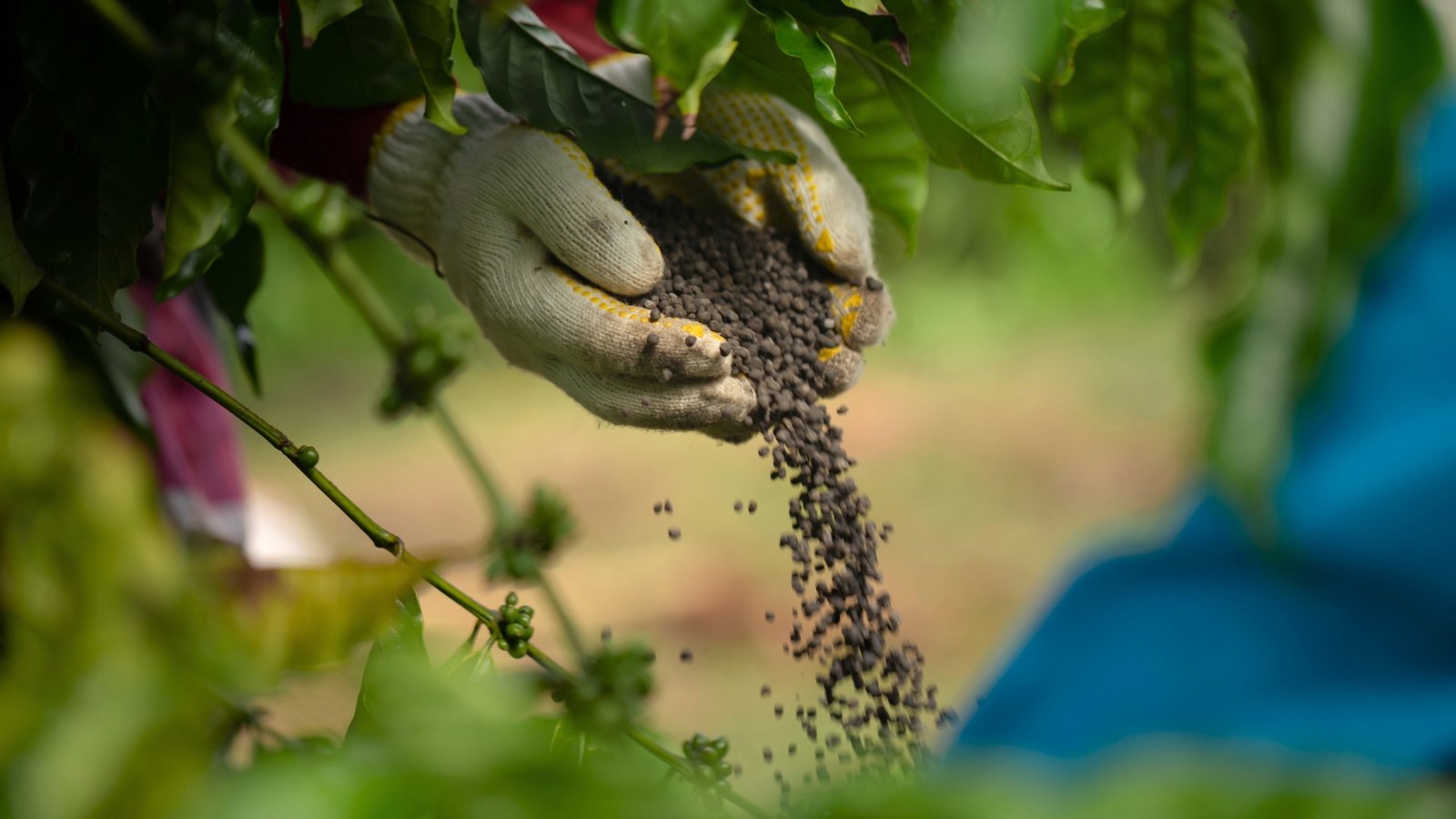
Regular feeding with a generally balanced slow-release fertilizer with added minerals, such as zinc, iron, boron, and magnesium, is recommended in summer. Commercial rose and citrus fertilizers are good for coffee plants.
Look out for yellowing leaves and treat them as an iron deficiency with chelated iron or other products for chlorosis. Add a layer of coffee grounds as a mulch.
Maintenance
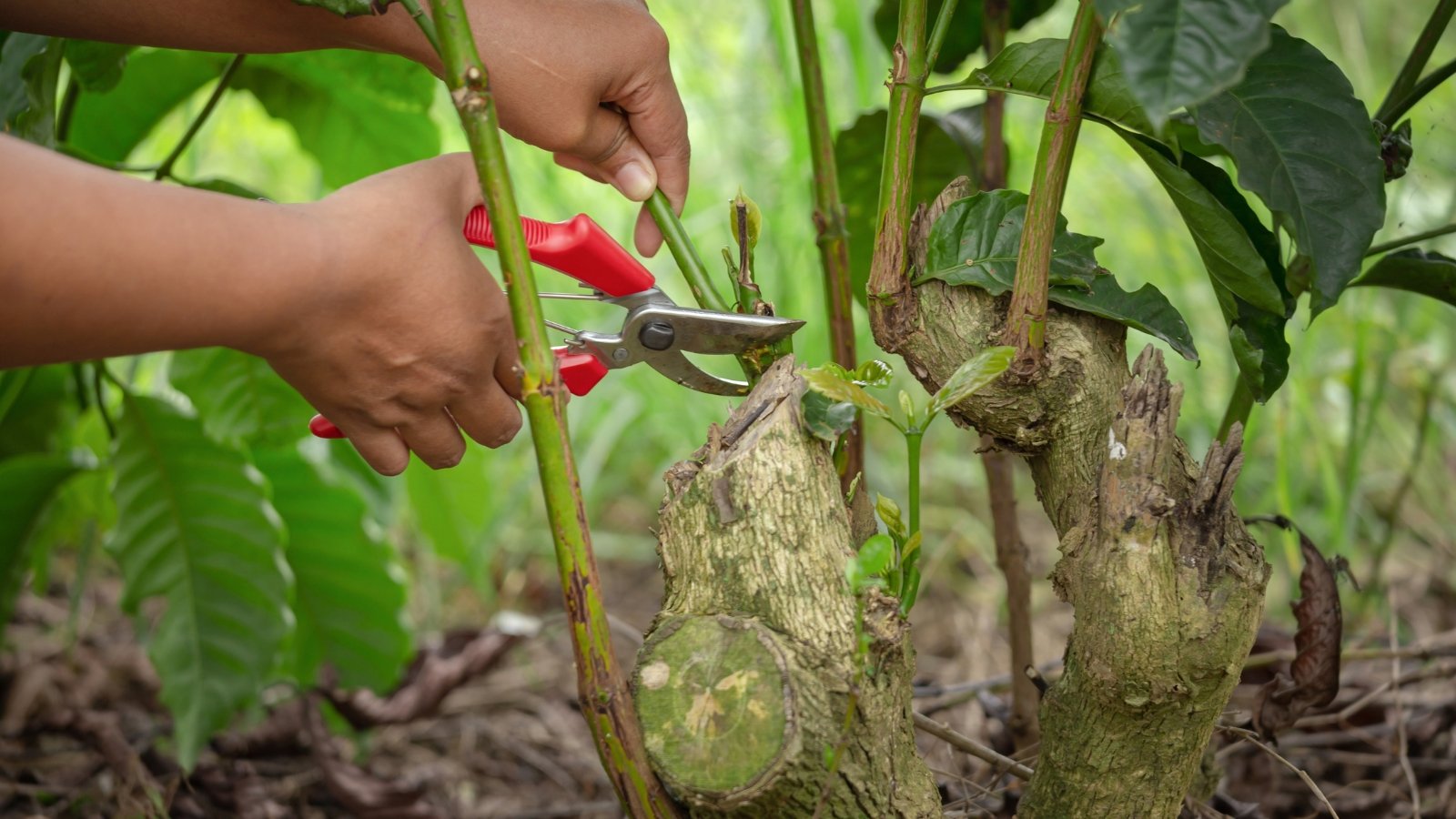
Pruning is necessary after harvesting the cherries to keep the plants healthy and compact and to ensure that light and air filter through all the branches for the best harvests. Prune away any damaged or diseased branches and space them evenly.
Planting
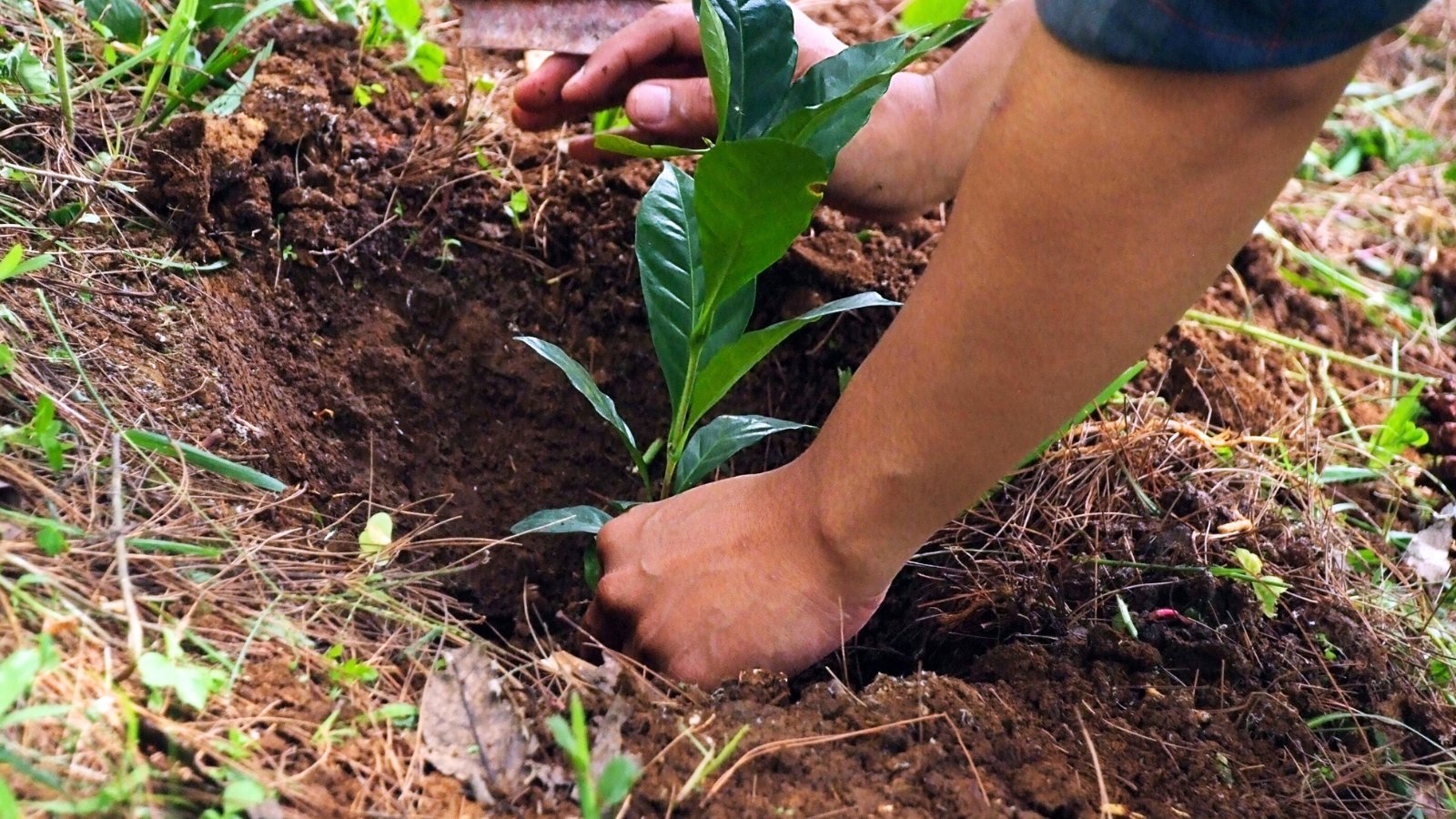
Preparing well at planting will ensure healthy trees throughout the season. Choose a location with morning sun and afternoon shade or an area with constant dappled shade. Avoid full sun, as this will scorch the leaves. Set plants at least eight feet apart from each other and any other plants or garden structures.
Dig a hole twice the width of the plant’s container. Prepare the dug-out soil with plenty of compost and ensure it is well-draining.
Remove the bag from the plant and gently tease the roots. Plant at the same depth as it came in its pot. Backfill the amended soil as you go and finish off by pressing the soil down well. Water in well and add a layer of organic mulch, keeping the mulch away from the tree’s trunk.
For containers, ensure the potting soil is enriched with compost and has plenty of drainage holes.
Propagation
Growing from Seed
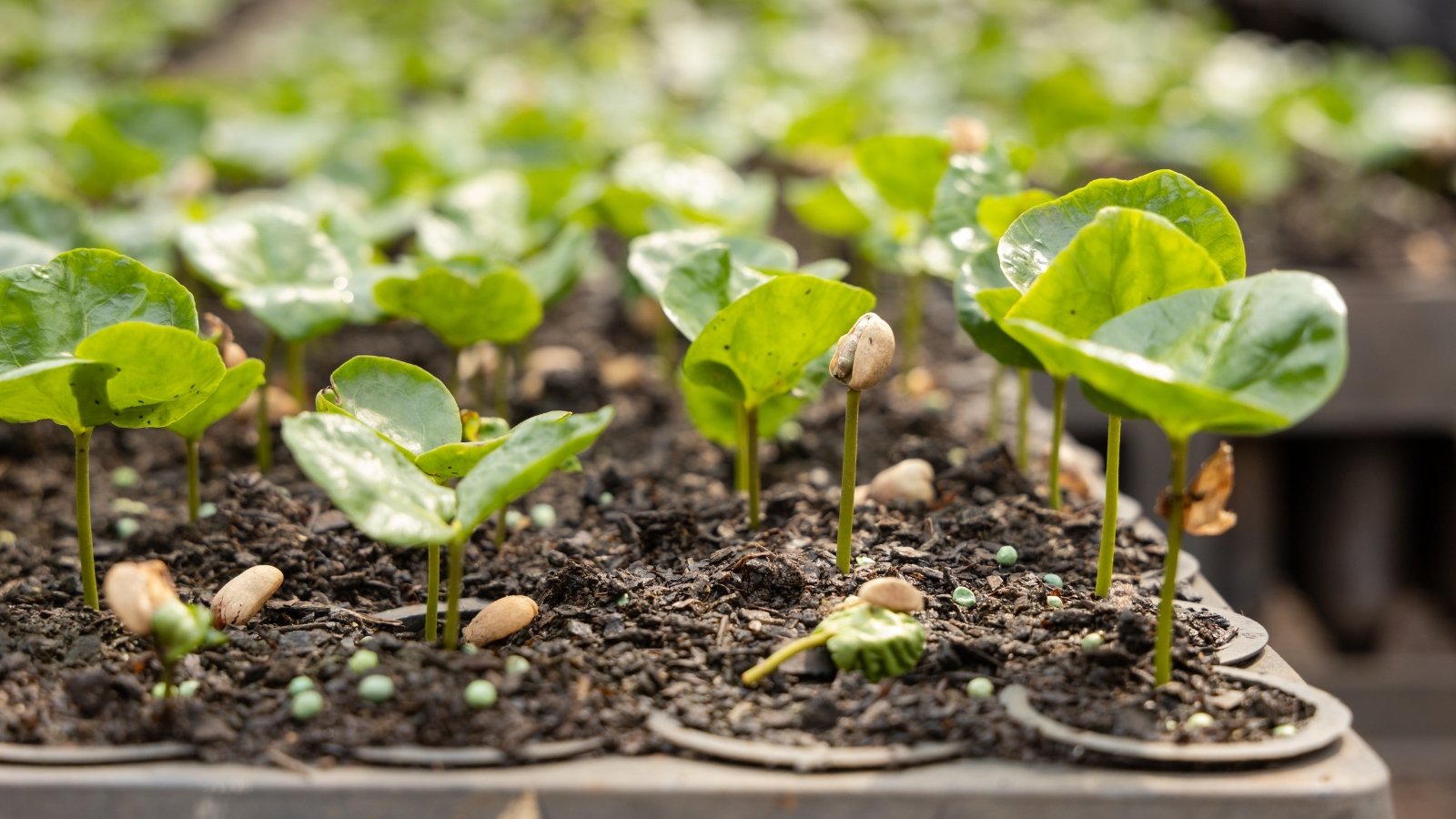
Before the seeds are roasted, they are green in color, and these can be used to grow coffee trees. This is not an ideal way to produce coffee in your garden, because it will take several years for the plants to be big enough to give you a cup. However, if you are willing to give it a try or just want a pretty houseplant, these are the steps:
- Soak the seed in water overnight. No longer, or they may rot.
- Place the seeds in a tray on a bed of seedling or germination mix.
- Cover with a thin layer of seedling mix.
- Bottom water so as not to displace the seeds.
- Keep in a warm environment and keep hydrated.
Germination of the seeds will take around six to eight weeks. Once they are big enough, they can be transplanted into pots or the ground.
Cuttings
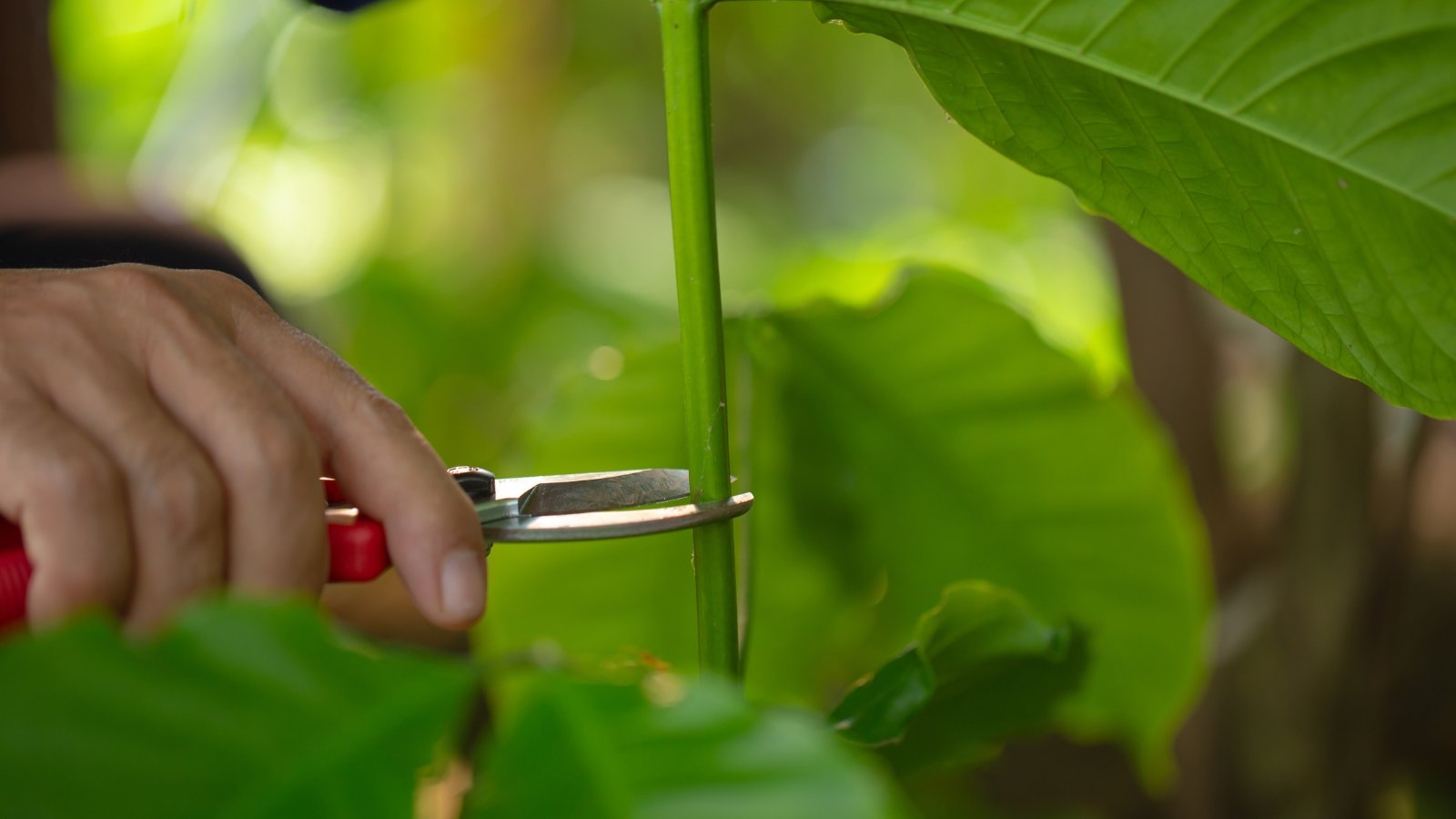
Another way to get more coffee plants is by cuttings. Follow these steps:
- With a clean pair of sharp pruners, take cuttings at least six inches long from a healthy tree.
- Remove all but the top leaves of the cutting.
- Fill a pot with damp potting or seedling mix.
- Dip the ends into water, and then into hormone-rooting powder.
- Make holes in the pot with a dowel or a pencil and pop in the plants a few inches deep. Press in well. You can plant three to four cuttings in a medium-sized pot.
- Cover the cuttings with a loose plastic bag to create an ecosystem and place it in a warm place.
- Check the cuttings every two weeks and give them more water if needed.
The cuttings should be rooted in a few months and then be potted up or planted in the garden for growing.
Harvesting
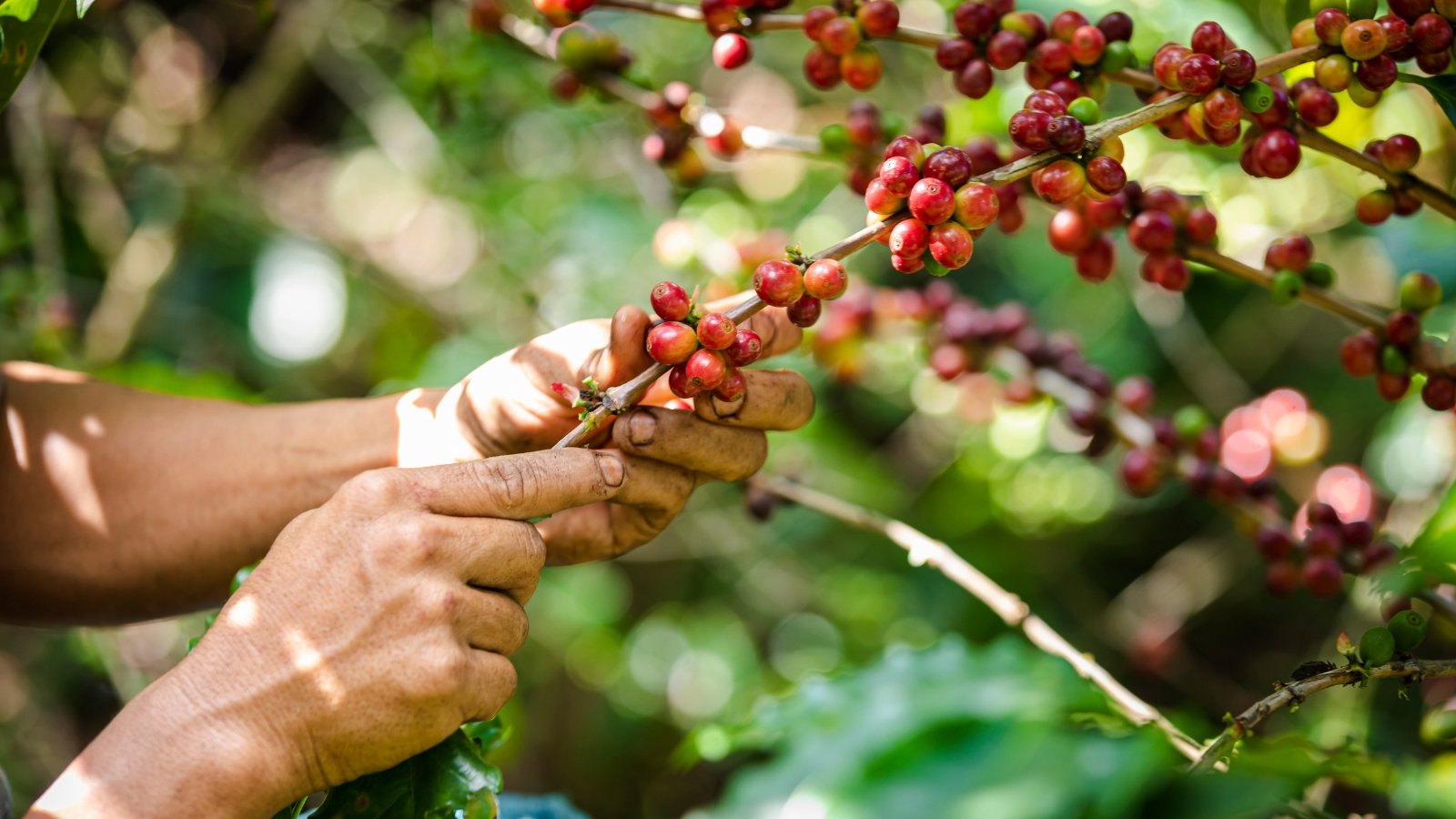
Coffee beans turn red in the fall and winter. They can be harvested when they are dark maroon in color. Most garden coffee plants must be picked by hand as there will not be enough to harvest mechanically or by stripping the branches. Pick the red ones, leaving the green ones to ripen on the tree. A few green ones will not be a problem.
Popular Varieties
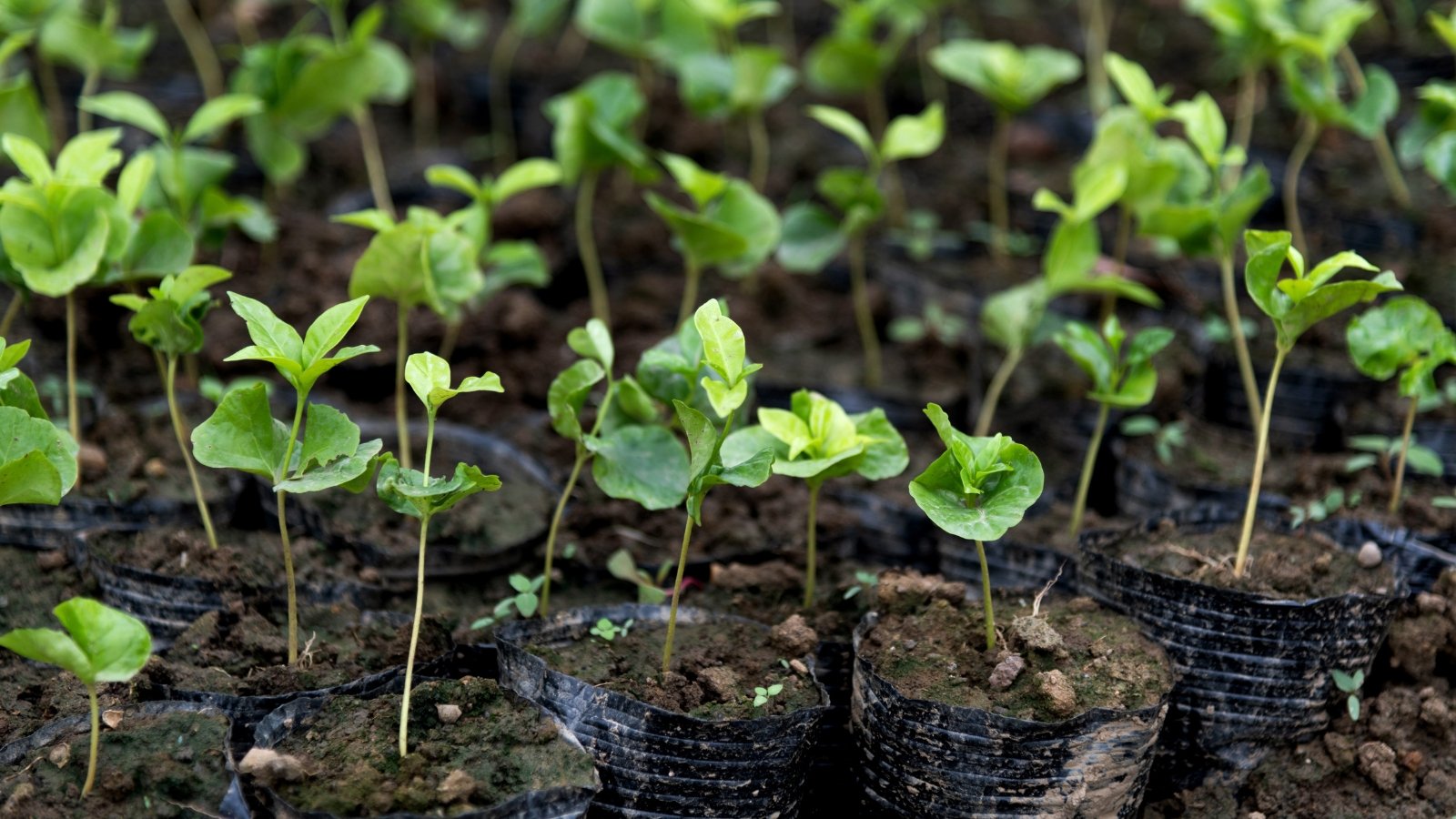
Thousands of varieties of Arabica have been produced over the years. It is best to buy a plant online and ensure it can grow in your hardiness zone or buy an established tree from your local nursery.
Common Problems
Overwatering
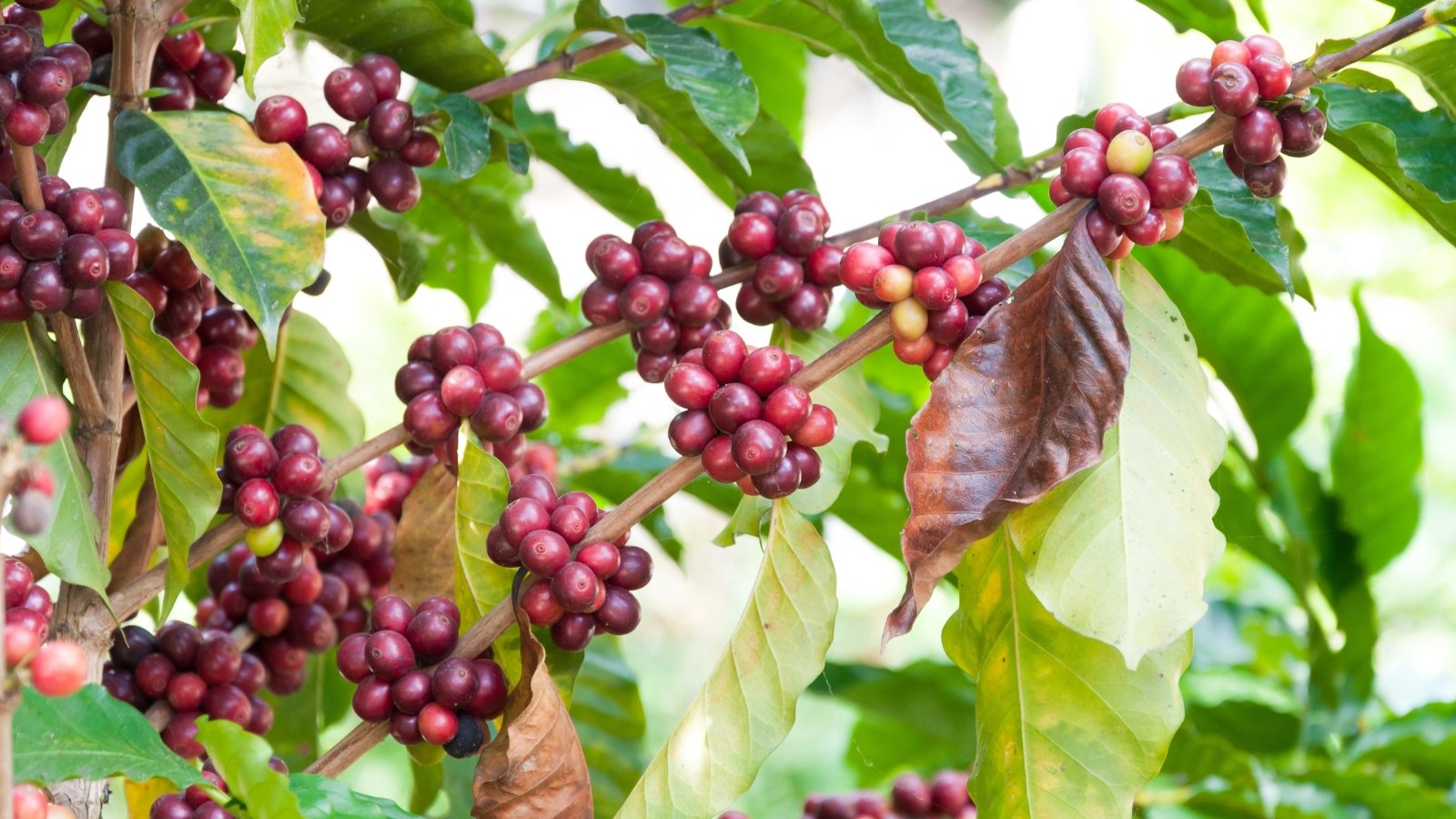
Coffee plants, like many other plants, will have the same issues. Avoid overwatering and make sure they are planted in well-draining soil. Soggy soils could result in root rot.
Browning leaves may also indicate that the plant is getting too much water. For houseplants, drain well before replacing trays or pot covers. Don’t allow the plants to sit in water.
Too Much or Too Little Sunlight
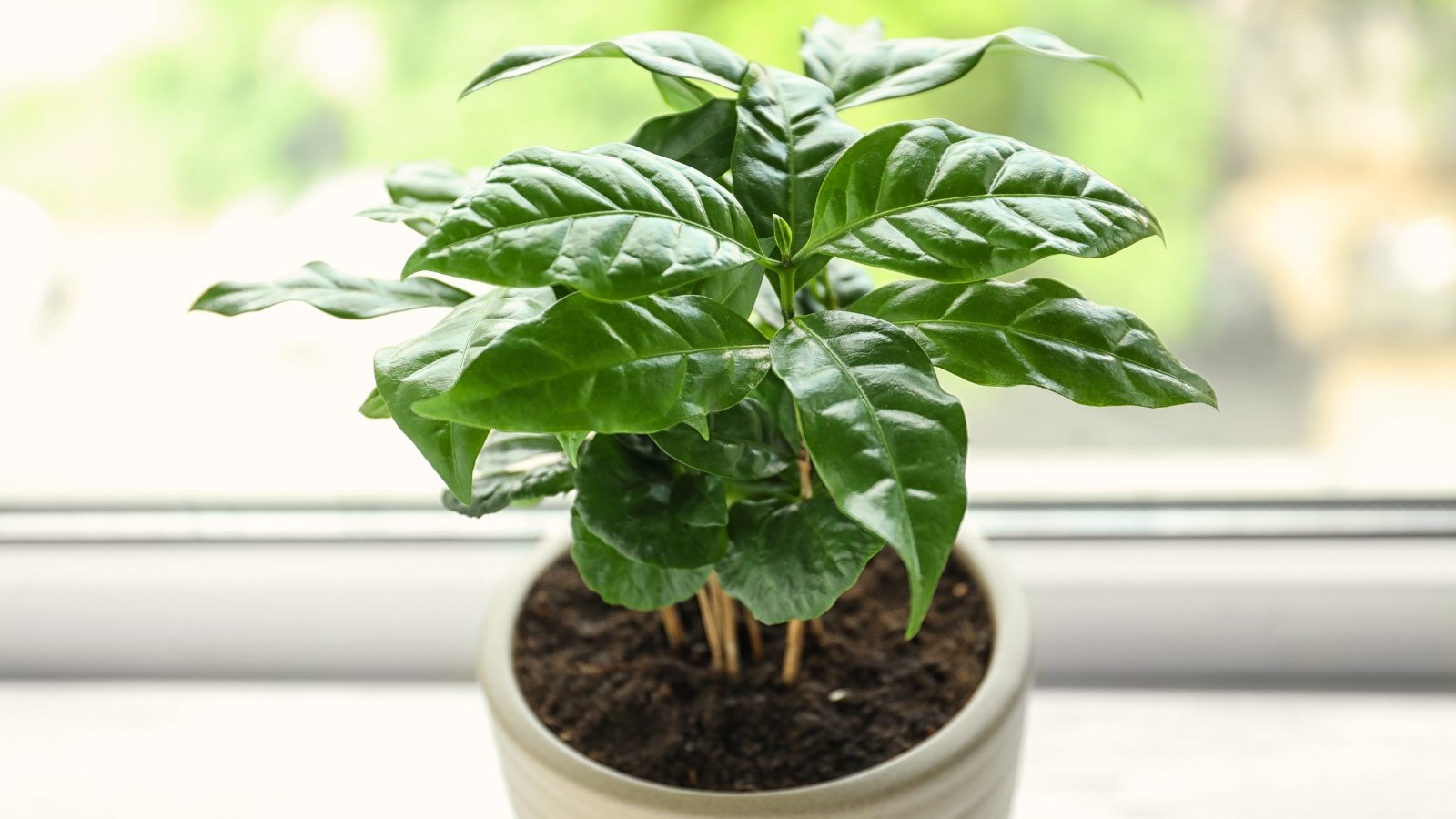
These trees prefer dappled shade to grow well; too much direct sunlight can scorch the leaves. Houseplants often suffer from the opposite and do not get enough indirect bright light to flower. Keep the pots a few feet back from an east, west, or south-facing window.
Pests and Diseases
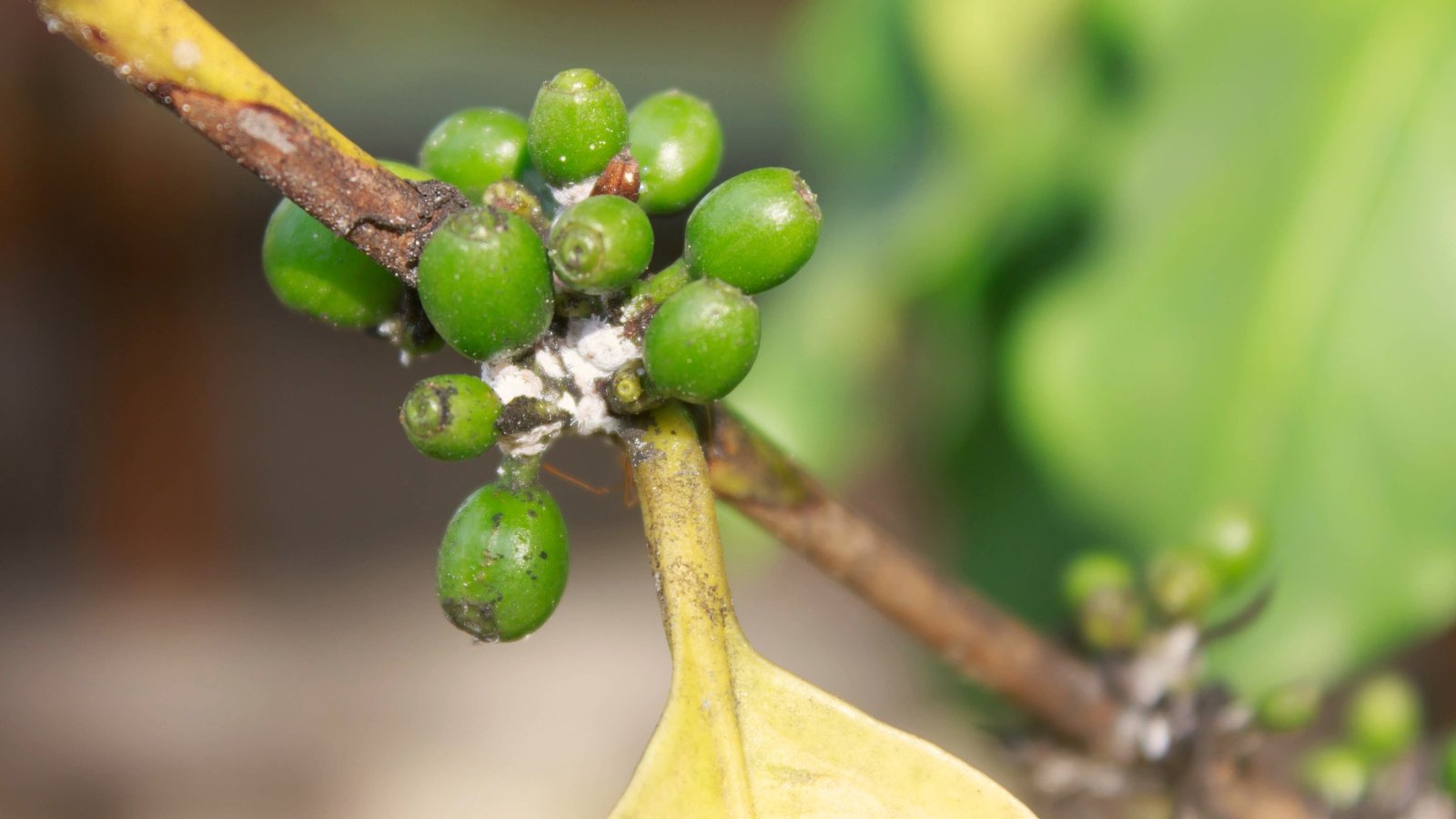
The caffeine content in coffee plants makes them relatively pest and disease free. Caffeine is a natural repellent and part of the plant’s defense mechanism. That is also why using coffee grinds as an insect repellant can be very effective. However, there are times when intervention may be needed for things like mealybugs, aphids, scale, and leaf spot.
A strong stream of water from a hose can take care of aphids. Scale and mealybugs should be removed from the bush with a cotton swab soaked in rubbing alcohol. Leaf spots can be controlled by removing affected leaves as they crop up.
Frequently Asked Questions
All parts of Coffea arabica are toxic to humans except the ripe fruit that holds the coffee beans. Don’t let children eat the berries off the trees. All parts are toxic to dogs, cats, and many other animals.
There are ways to make a houseplant grow faster, and it usually involves increasing temperature and ensuring the humidity is about 50%. When the beans ripen, they need a slow and steady environment, so quick and fast is not ideal.
In the wild, arabica plants can live 80 years or more. Their most productive years are between 7 and 20 years.
Final Thoughts
I savor the cup of strong coffee I drink daily, and as a newbie to growing coffee, I can’t wait to harvest my first batch of beans and try out the processing and roasting. My trees are healthy and strong; if you can be proud of a tree, that would be me. I have been accused of doomsday hoarding, getting into canning, and preserving in the suburbs, but I think processing my coffee will be my best decision ever. I’m not sure I will share with my accusers if something ever happens…


